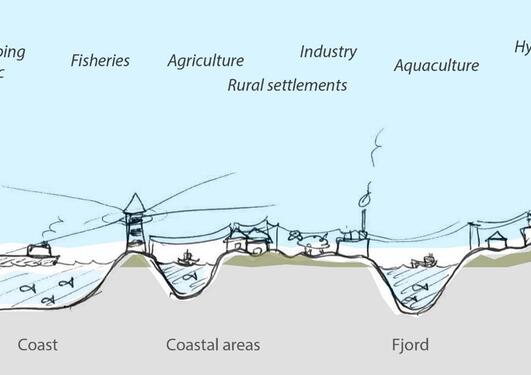Norway's first Biosphere reserve approved
– People at the University of Bergen together with people from Nordhordland have been slaving away to make the first Norwegian biosphere under UNESCO’s Man and the Biosphere programme happen.

Hovedinnhold
From the ocean and coastline in the west, through fjord landscape, to the mountains of Stølsheimen to the east - to hydropower, petroleum industry, and aquaculture– this is Norway’s first UNESCO biosphere – Nordhordland. An outstanding place for nature and people to exist in a harmony. Enabling people to embrace and preserve nature at the same time.
The 19th of June in Paris UNESCO announced that Nordhordland is to become a biosphere reserve. Researchers from the University of Bergen have contributed with their knowledge to the 288 page long application to get the area approved. Petter Emil Kaland has worked intensely on the approval of this area for no less than 24 years. Over the last couple of years, UiB’s UNESCO Chair Inger Elisabeth Måren has also been part of this work. The University of Bergen aims to work closely with the UN’s sustainable development goals and this brings them one step closer.

At UNESCO headquarters in Paris celebrating Nordhordland as Norway’s first biosphere area. From the left: Kjersti Isdal (Nordhordland Utviklingsselskap), Ørjan Totland (BIO), Inger Måren (BIO), Peter Emil Kaland (BIO), Olav Nord-Varhaug (Miljødirektoratet), Jarle Skeidsvoll (ordfører Osterøy) og Kari Natland (prosjektleder Nordhordland Utviklingsselskap).
What is a biosphere reserve and what is its purpose?
A biosphere reserve is a model area for sustainable development. It is not about closing people out, on the contrary, it is actually meant to bring people and nature closer together. While it is an inspiring area for development, the aim is to conserve the resources for future use as well. Not only is sustainability a keyword in this project, but also further development is a key concept. The biosphere reserve can be used to resolve future issues and therefore is supposed to have three functions:
1. Development
It is a region that is supposed to be used for improving infrastructure and economy while respecting the environment. Examples can be to introduce new ways of extrapolating energy, explore more sustainable means that can substitute oil, and carry out research that can benefit more sustainable feed for aquacultured fish.
2. Conservation
While developing new techniques and carrying out research to obtain knowledge for a sustainable future, the environment must be safe guarded. Wildlife, landscapes, culture, and the history of the land will be maintained. Maintenance of the environment will provide goods for us through food, water, and wellbeing.
3. Obtain knowledge
Environmental education, research, and public engagement are essential tools in a biosphere reserve. It is also an important area to study and learn from to be able to provide information to local, national, and global issues of conservation and sustainable development.

The resource gradient from west to east that Nordhordland covers.
The backyard of the university
Since the Nordhordland biosphere reserve covers everything from the ocean to the top of the mountains it encompasses a unique study area. It is the Nordhordland region that will be in charge of the UNESCO biosphere project and hopefully we will develop a MAB (Man and the Biosphere) organization in Norway, much like our Swedish colleagues have managed to do. This biosphere is the backyard of the university in Bergen, with a great potential to be of use for students and scientists to carry out research. It can be an insightful area to study everything from the greening of the oil industry to organismal behaviour, which will have value to our society. The collaboration between the university and the region will hopefully turn out to be a thriving relationship between obtaining new knowledge and enjoying a sustainable environment.
What does the future hold for the area?
Nordhordland is a region where we will see much development as the petroleum-based industry is phased out. The region’s vicinity to Bergen will also play a major role in this development. The urban-rural interphase can take many forms, spanning from food production to tourism development. The emerging biosphere organization will hopefully act as a round-table forum, where people can meet, discuss and find common grounds for creating a sustainable future for the people of Nordhordland and beyond.


